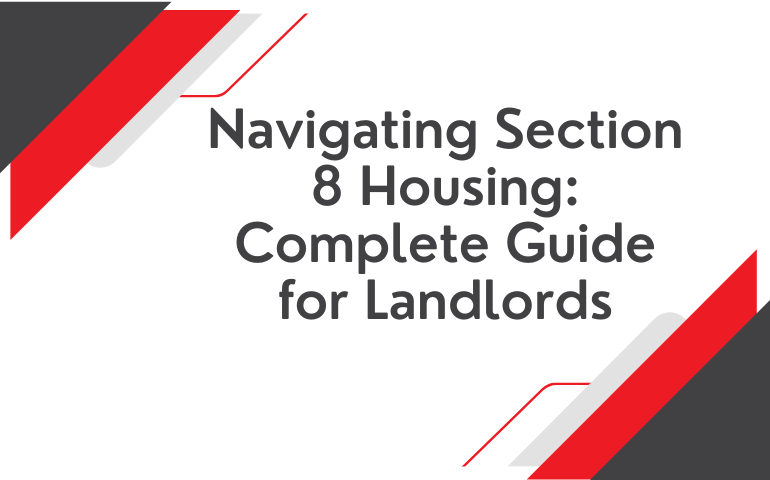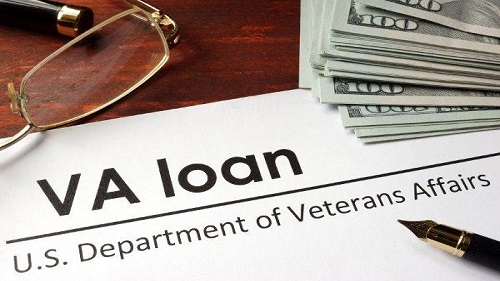
Mortgage Dove
Navigating Section 8 Housing: Complete Guide for Landlords
In affordable housing, Section 8 emerges as a critical program connecting landlords with needy individuals. For landlords, engaging with Section 8 can mean providing stable housing and enjoying guaranteed payments and other advantages. Whether you're a seasoned property owner or considering entering the rental market, understanding Section 8 is essential. At Mortgage Dove, we recognize the significance of Section 8 in the rental market and aim to guide landlords through the journey. Section 8 landlords support low-income individuals and families by offering affordable housing options. Established under the Housing Act of 1937, Section 8 aims to provide decent living arrangements for low-income earners, people with disabilities, and aging Americans. As a Section 8 landlord, you become a participant in the Section 8 Housing Choice Voucher (HCV) program, administered by local public housing agencies (PHAs), receiving funding from the U.S. Department of Housing and Urban Development (HUD). The perks include a consistent income stream, but it comes with the responsibility of adhering to stricter guidelines imposed by the program. It is the tenant's responsibility to meet the Section 8 requirements and complete the approval process. A PHA chooses who's eligible to rent, but landlords have the final say over who rents. Here's how Section 8 tenants go about getting a tenant's application approved. The applicant's income is crucial in determining Section 8 eligibility. There are only a few wage earners who are eligible for the program. Most meager-income people earn 30% or less of the area's median income. Low-income individuals make less than 50% of the area's median income. Vouchers for housing assistance are distributed by Public Housing Agencies (PHAs) in various local areas. In addition to screening potential tenants, they also provide maintenance for the building. It has been mentioned that income level is the most important criterion for eligibility. A PHA will also consider the number of children in the household, the applicant's age, disability status, previous home displacements, and citizenship or eligibility for an immigrant visa. Unfortunately, the program has more Section 8 voucher recipients than vouchers. Once the PHA has approved a person or family, they are added to a waiting list. An eligible tenant may have to wait years before a voucher becomes available due to overwhelming demand. Depending on the level of demand, funding may not be available to meet it. Therefore, voucher lottery entries are possible for applicants. The availability of these can sometimes be an advantage for those living in areas where affordable housing is most in demand, such as large cities. It is legal for PHAs to distribute 75% of their vouchers to applicants who qualify for low-income housing assistance. This gives people who earn 30% of the median income in their area an advantage. Therefore, it severely disadvantages low-income households. Section 8 vouchers generally cover rental and utility expenses to approximately 70%. The landlord's bank account is directly linked to these costs. In addition, the tenant covers 30% of the fees from their income. The rent limit is higher, however. An apartment of a family's choice can be purchased at an additional cost. Nevertheless, they can only borrow up to 40% of their adjusted monthly gross income. Renting out Section 8 housing involves a structured process that requires collaboration between landlords, tenants, and PHAs. Here's a step-by-step guide: Participants search for eligible housing options once they receive their voucher from the PHA. Landlords complete a Request for Tenancy Approval Form (RTA/RFTA) detailing information about the unit, including rent, address, and utility costs. Tenant screening involves the regular process of assessing the tenant's suitability, even though the PHA conducts its screening. After gaining approval to rent, the voucher holder returns to the PHA, which reviews the rent to ensure it is reasonable and affordable for the tenant. The PHA conducts a thorough inspection of the rental property to ensure it meets HUD’s Housing Quality Standards before signing the lease. The PHA approves the rent, ensuring it aligns with the tenant's ability to pay. After approval, all parties, including the PHA, sign the lease. Section 8 landlords shoulder responsibilities integral to the program's success and their tenants' well-being. Beyond the standard obligations of private landlords, Section 8 landlords must meet specific sanitary and safety conditions essential for providing decent housing. These responsibilities encompass maintaining the property by HUD's Housing Quality Standards. Section 8 landlords must also engage in some extra paperwork, often facilitated through the local Public Housing Agency's (PHA) website. This paperwork ensures compliance with program guidelines and facilitates smooth communication between landlords, tenants, and PHAs. By upholding these responsibilities, Section 8 landlords play a crucial role in creating a supportive and sustainable living environment for needy individuals and families. Like any investment decision, becoming a Section 8 landlord has its advantages and challenges. Let's explore the pros and cons: Pros: Rent payments are typically guaranteed, providing a reliable and consistent income source for landlords. Landlords are allowed to request approval for a rent increase once per year based on market conditions. The demand for Section 8 housing is usually higher than the supply, leading to low vacancy rates. Tenants also tend to stay for longer durations. PHAs screen applicants, ensuring they meet certain standards, which can ease the burden of extensive tenant vetting for landlords. Cons: Landlords must comply with local PHAs, which may require additional paperwork and communication. Landlords do not receive the first month's rent until after the tenant moves in, leading to potential delays. Local PHAs conduct yearly property inspections, and failing one may require repairs or result in the loss of the subsidy. Embracing the role of a Section 8 landlord can be a rewarding venture with the potential for stable income and a positive impact on communities. Understanding the processes, responsibilities, and potential pros and cons is crucial for navigating this unique aspect of the rental market. Mortgage Dove stands as a reliable partner for landlords looking to explore the Section 8 housing market, providing guidance and support throughout the journey. As you consider your options in the rental property landscape, remember that Section 8 housing is a vital component of affordable housing, benefiting both landlords and those in need of stable living arrangements.What Is A Section 8 Landlord?
What Is A Section 8 Tenant?
Requirements for Eligibility
Tenant Application Process
Waiting List
Allotment of Vouchers
Direct Payments To Landlord
How To Rent Out Section 8 Housing
Section 8 Landlords: What Are Their Responsibilities?
What Are The Pros And Cons Of Becoming A Section 8 Landlord?
Bottom Line
"Mortgage Dove makes home financing convenient for every American. You can count on us to provide a home buying experience tailored to your personal needs and financial situation. We strive to give you the peace of mind that your home financing goals can be achieved.”

Mortgage®
www.mortgagedove.com



-and-how-does-it-work.png)